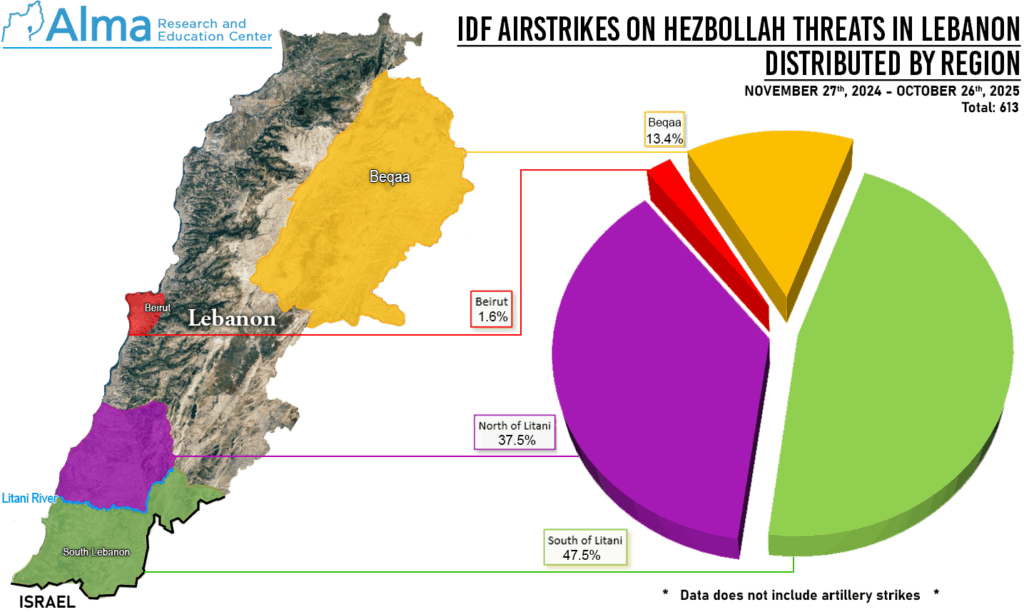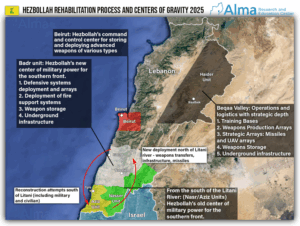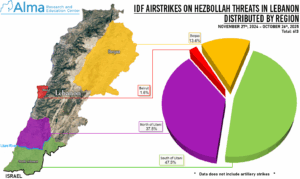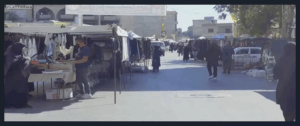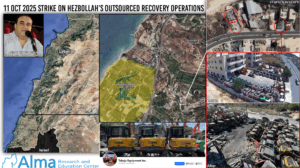As of October 26, 2025, Israel carried out 613 strikes in Lebanon during the ceasefire. Below is the percentage distribution of the strike areas and their characteristics:
47.5% of the strikes were south of the Litani River. An area that, before the war, contained thousands of fixed Hezbollah infrastructure targets. These are now targets that were not addressed during the war through strikes and ground maneuvers, as well as repeated strikes on reconstruction attempts.
37.5% of the strikes were north of the Litani (the current operational center of gravity – the Badr unit area).
Approximately 13% of the strikes were in the Bekaa (operational and logistical area with strategic depth) where, among other things, weapon production facilities, training arrays, and strategic systems such as missiles and UAVs are deployed.
The general objective of the strikes is to reduce Hezbollah operatives’ freedom of action and movement, to damage weapons and infrastructure (including civilian infrastructure that serves as a base and cover for military reconstruction), and to create a sense of being hunted and vulnerability. The emphasis of the strikes in southern Lebanon is to disrupt and even prevent Hezbollah’s efforts to rehabilitate the front and line of contact with Israel, and to push Hezbollah operatives and their capabilities north of the Litani River.

